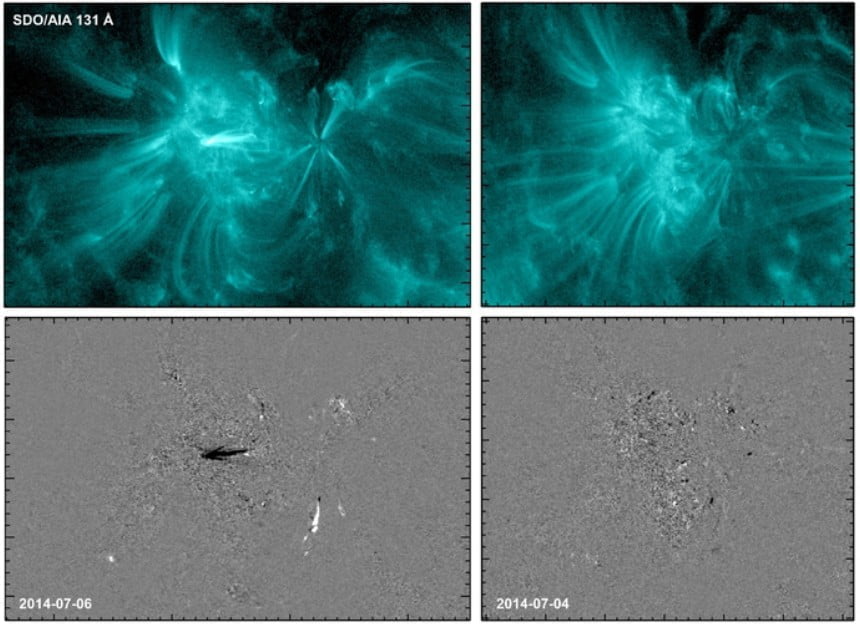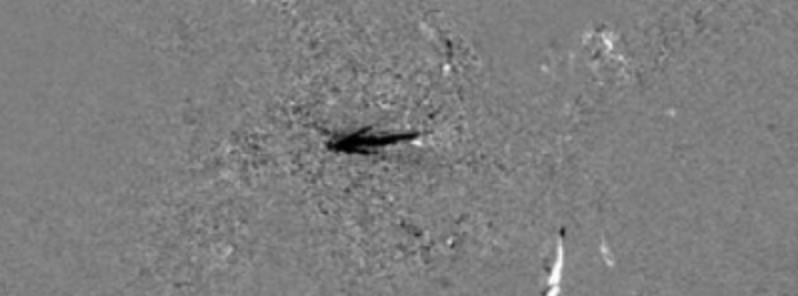A team of scientists from NorthWest Research Associates (NWRA) have made a breakthrough discovery in the study of solar flares, using data from NASA’s Solar Dynamics Observatory (SDO). The researchers found small signals in the upper layers of the solar atmosphere, known as the corona, that can indicate which regions on the Sun are more likely to produce solar flares.
Solar flares are energetic bursts of light and particles released from the Sun that can have a significant impact on Earth. Space weather, caused by the Sun’s activity, can produce auroras, endanger astronauts, disrupt radio communications, and even cause large electrical blackouts.
Previous studies have focused on how activity in lower layers of the Sun’s atmosphere, such as the photosphere and chromosphere, can indicate impending flare activity in active regions. These regions are often marked by groups of sunspots or strong magnetic regions on the surface of the Sun that are darker and cooler compared to their surroundings.
The new findings, published in The Astrophysical Journal, add to that picture, providing a new marker to distinguish which active regions are likely to flare soon and which will remain quiet.
The scientists used a newly created image database of the Sun’s active regions captured by SDO, which was led by Karin Dissauer and engineered by Eric L. Wagner. The publicly available resource, described in a companion paper also in The Astrophysical Journal, combines over eight years of images taken of active regions in ultraviolet and extreme-ultraviolet light.

Image credit: NASA/SDO/AIA/Dissauer et al. 2022
The team studied a large sample of active regions from the database, using statistical methods developed by team member Graham Barnes.
Their analysis revealed small flashes in the corona preceded each flare. These and other new insights will give researchers a better understanding of the physics taking place in these magnetically active regions, with the goal of developing new tools to predict solar flares.
“With this research, we are really starting to dig deeper,” said Dissauer. “Down the road, combining all this information from the surface up through the corona should allow forecasters to make better predictions about when and where solar flares will happen.”
Properties of Flare-imminent versus Flare-quiet Active Regions from the Chromosphere through the Corona. II. Nonparametric Discriminant Analysis Results from the NWRA Classification Infrastructure (NCI) – The Astrophysical Journal – K. D. Leka et al – January 16, 2023 – DOI 10.3847/1538-4357/ac9c04 – OPEN ACCESS




